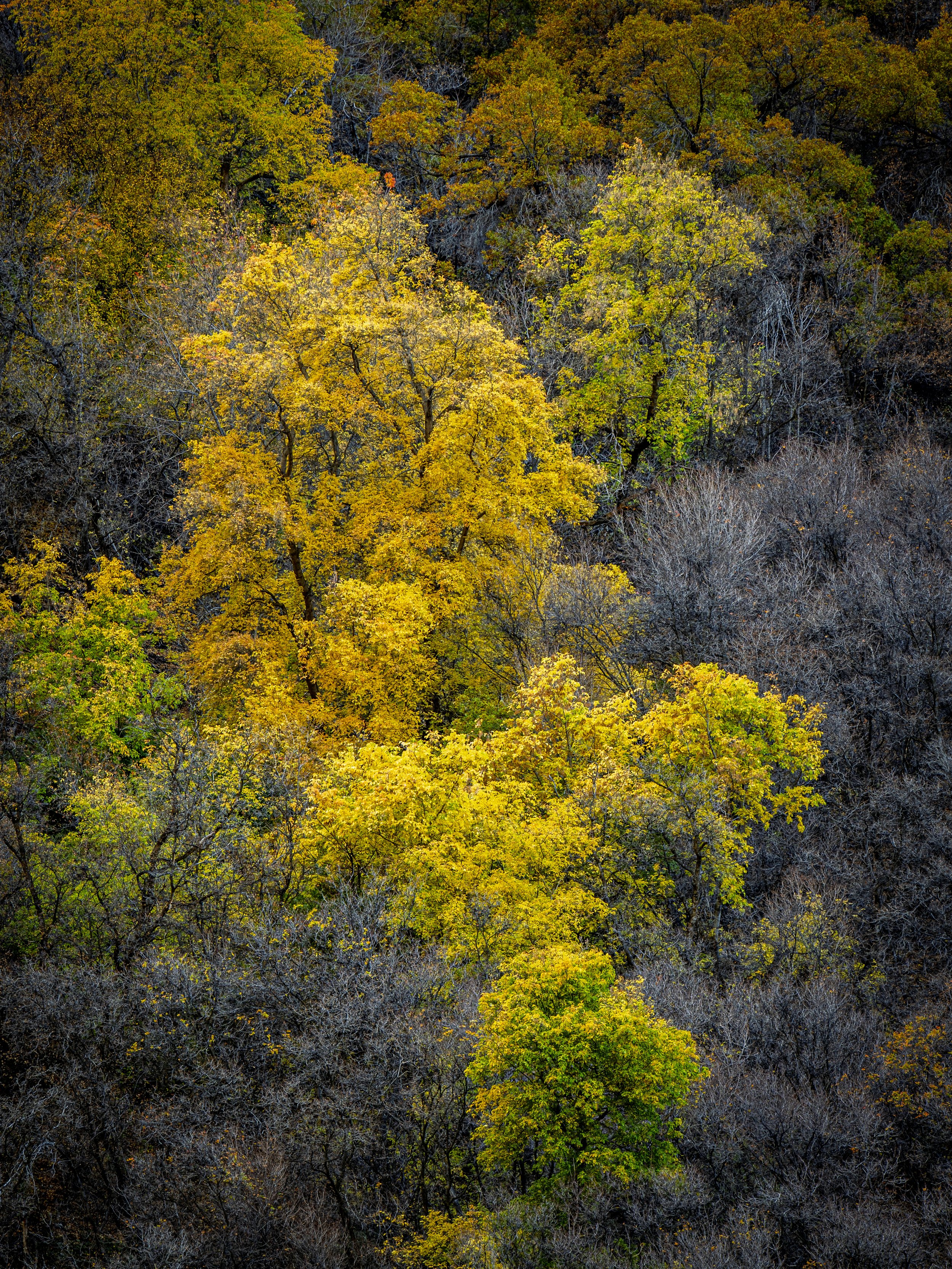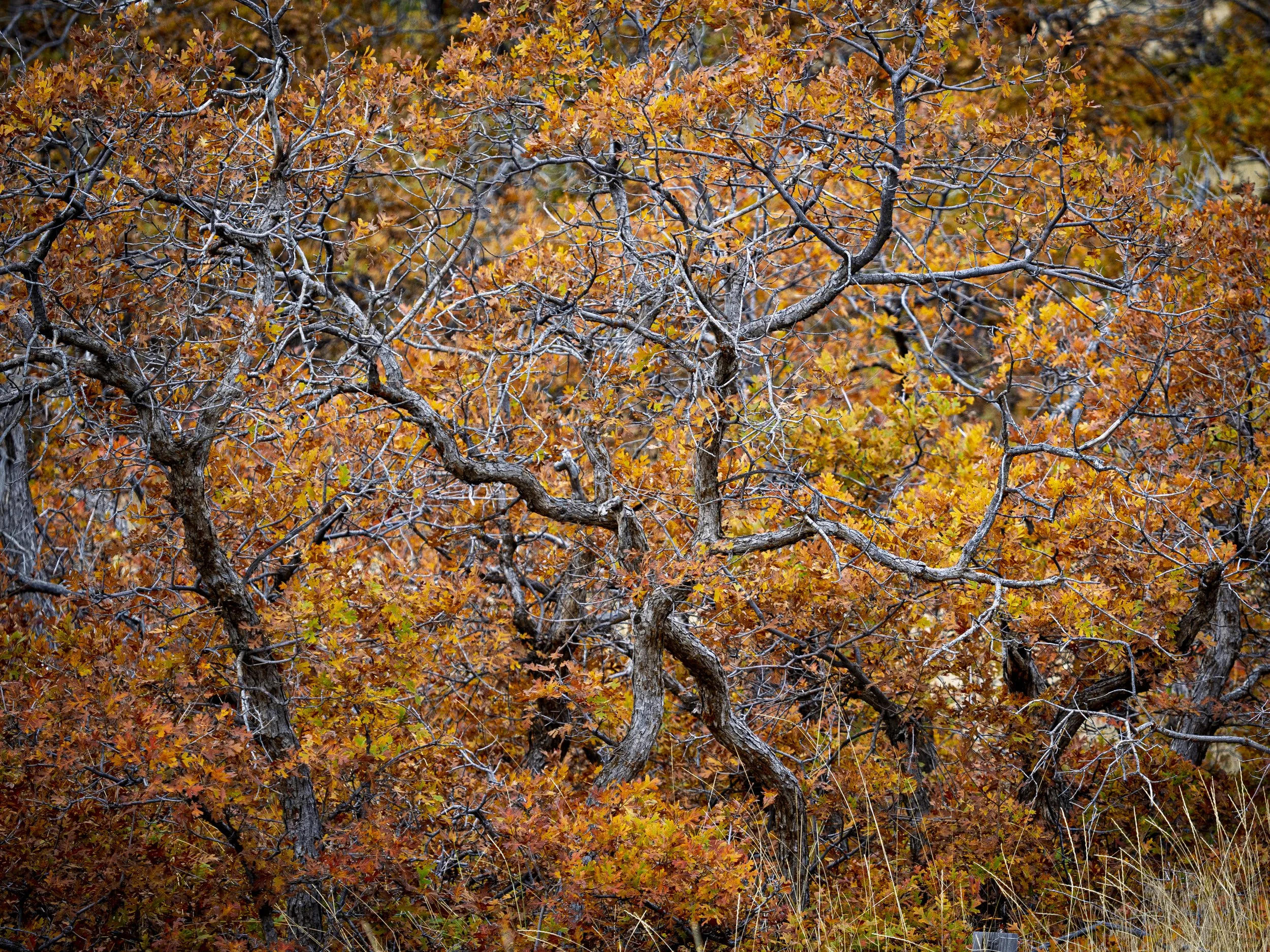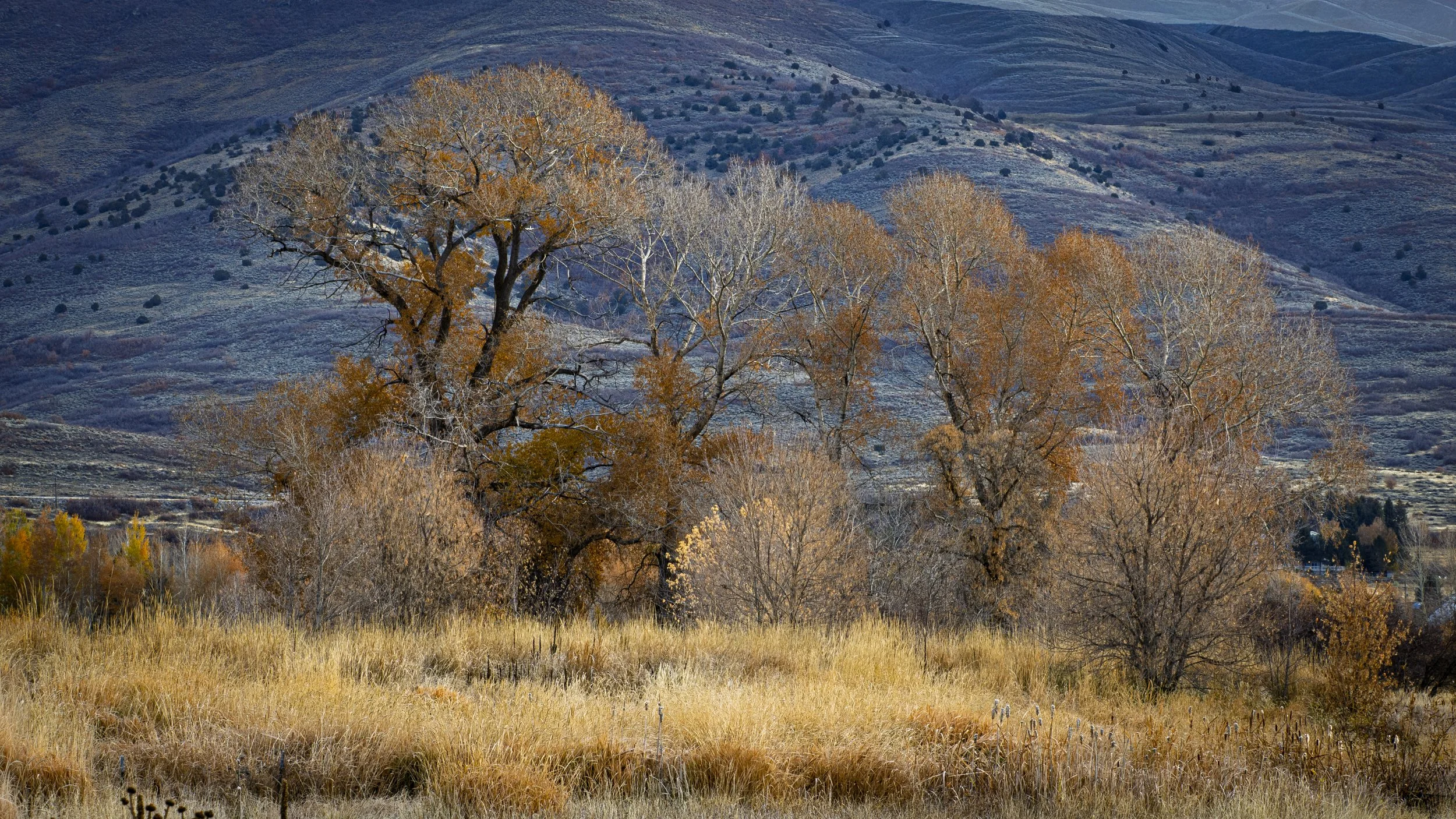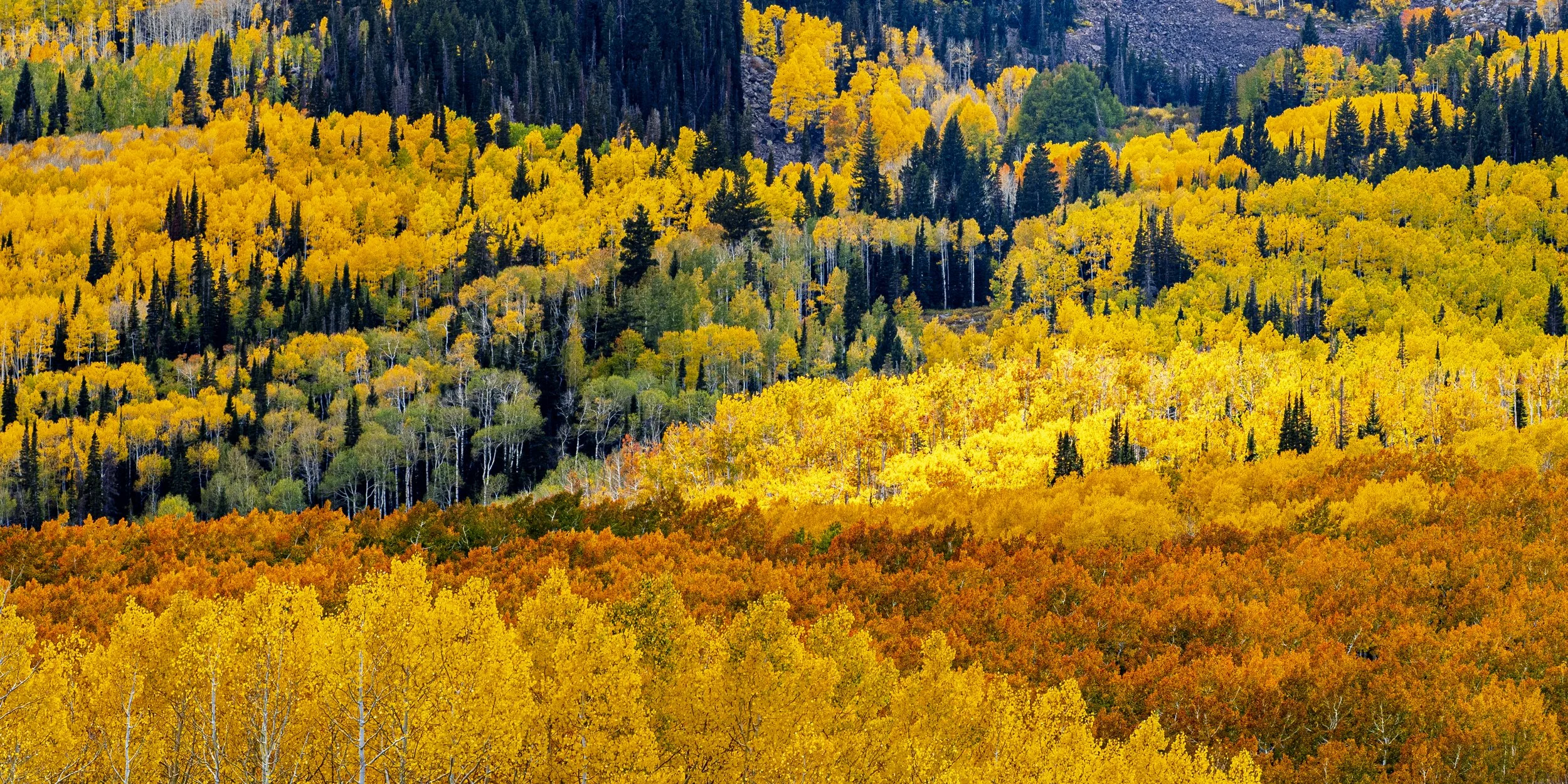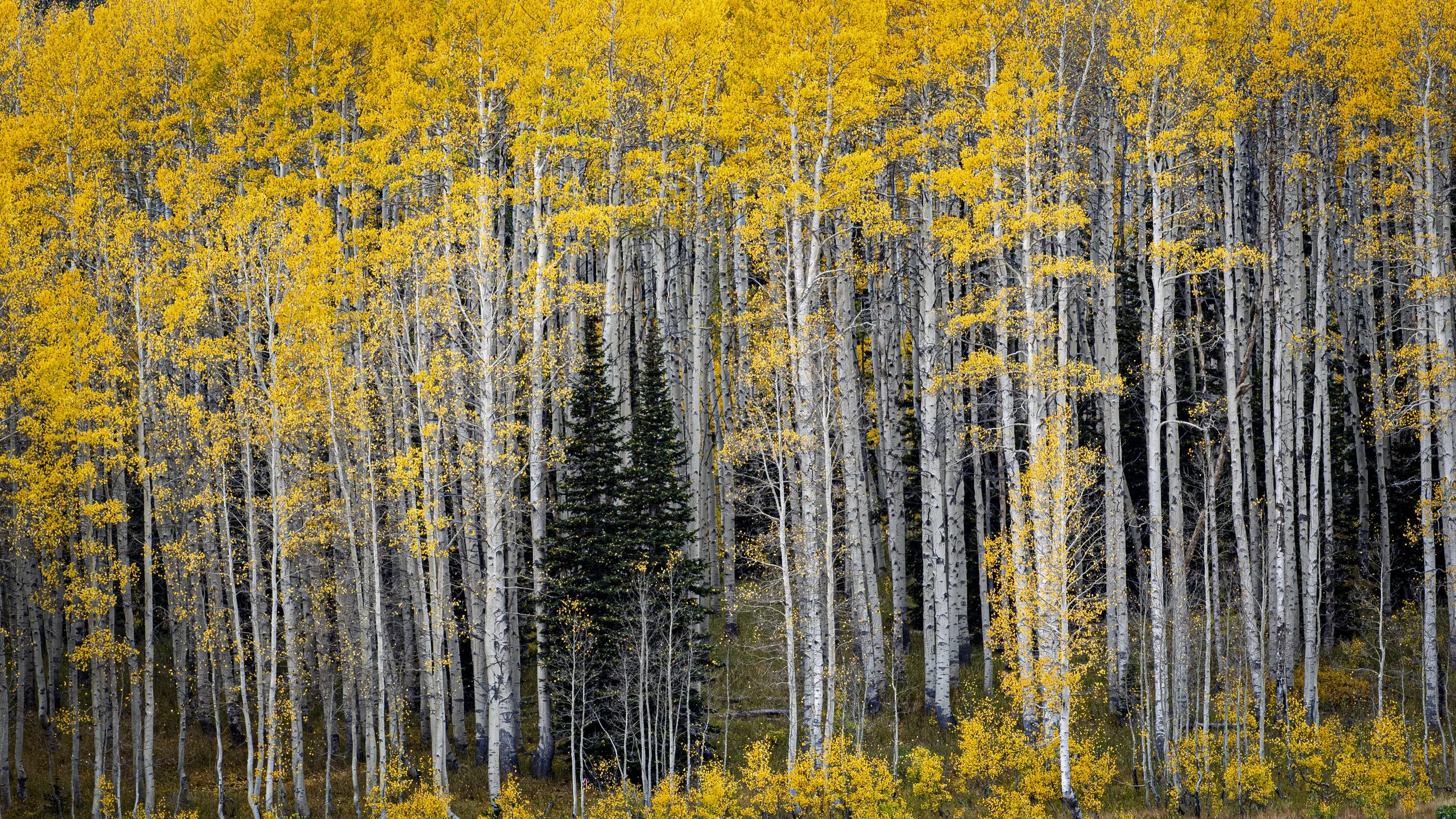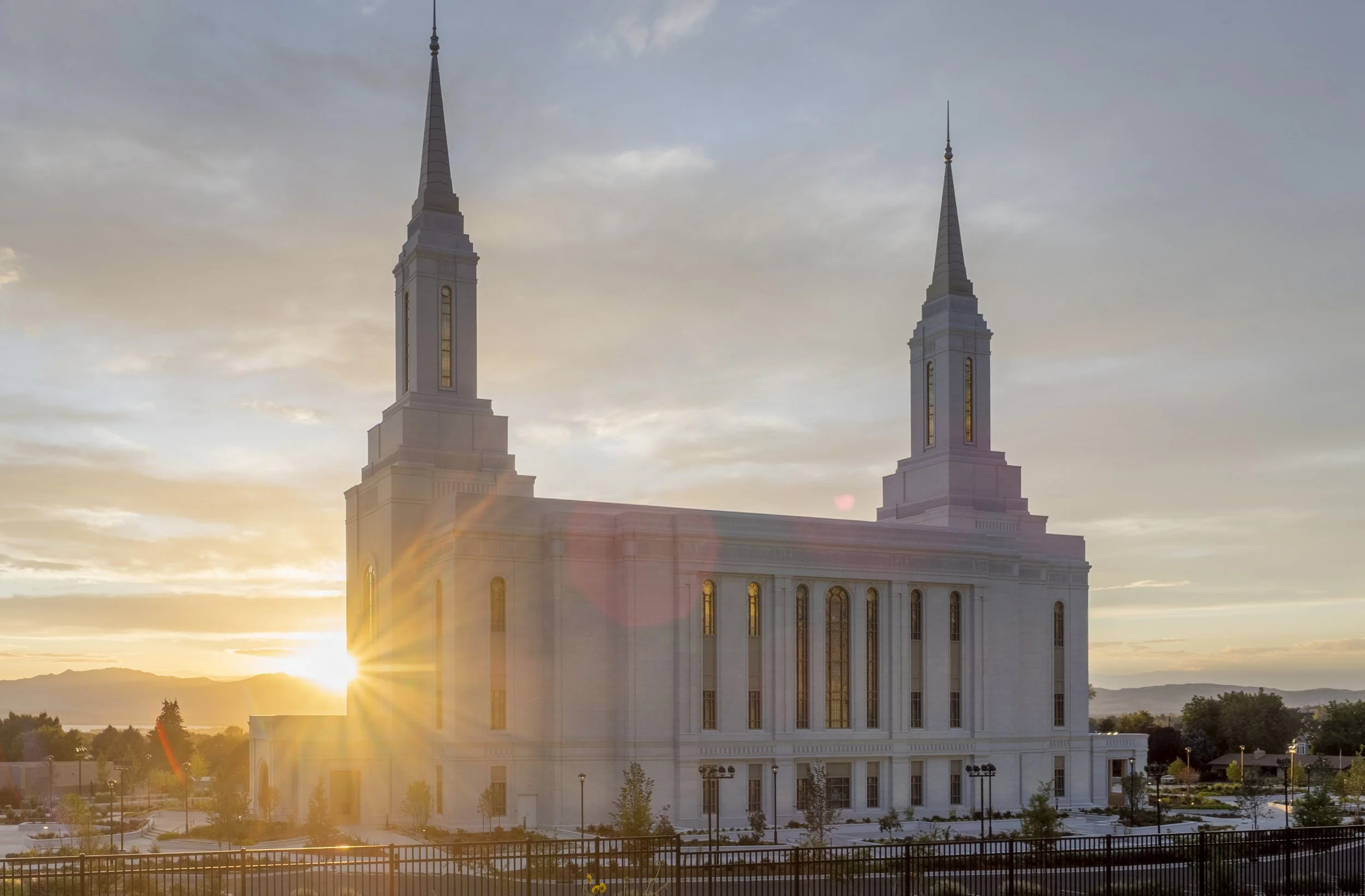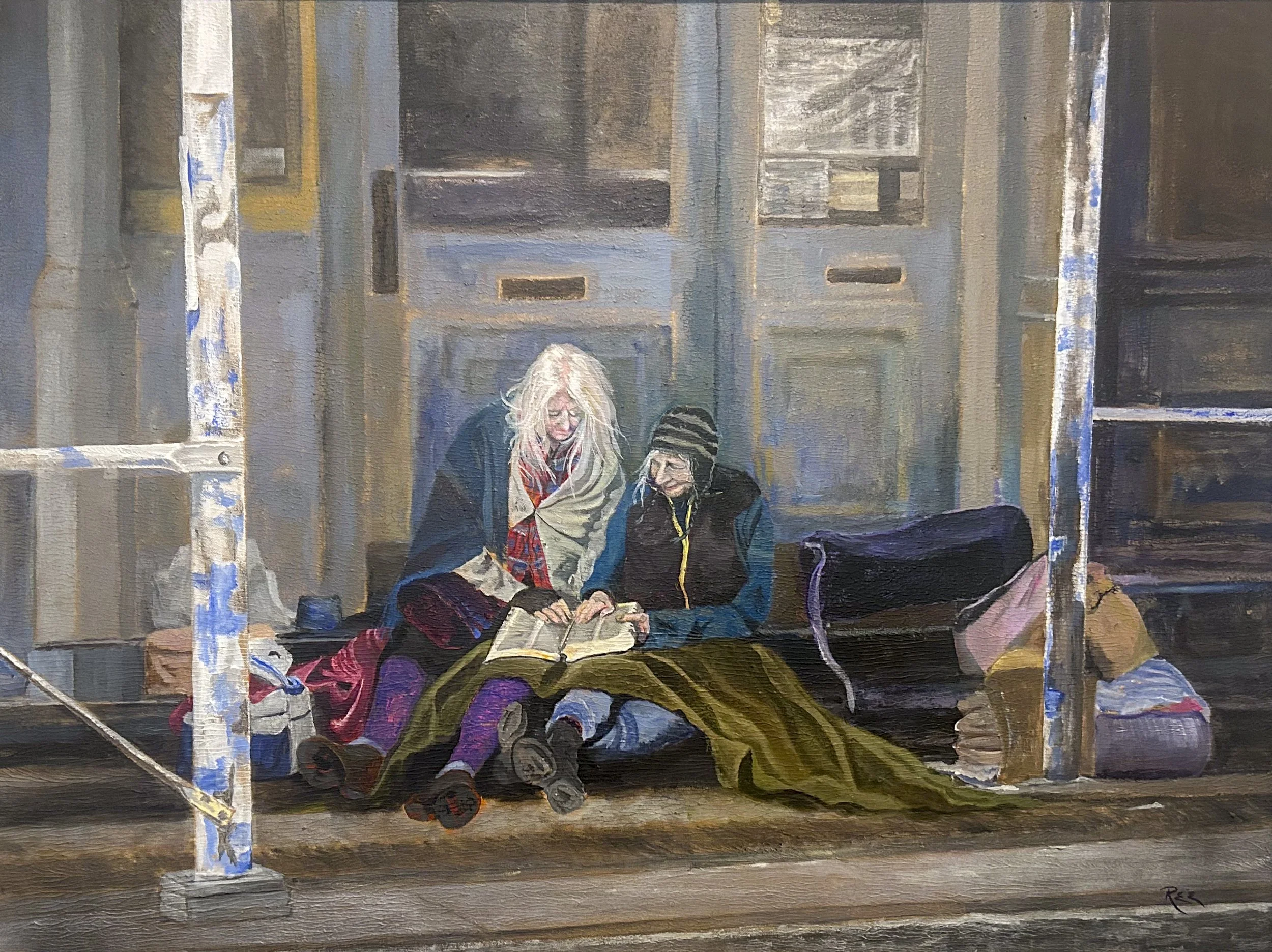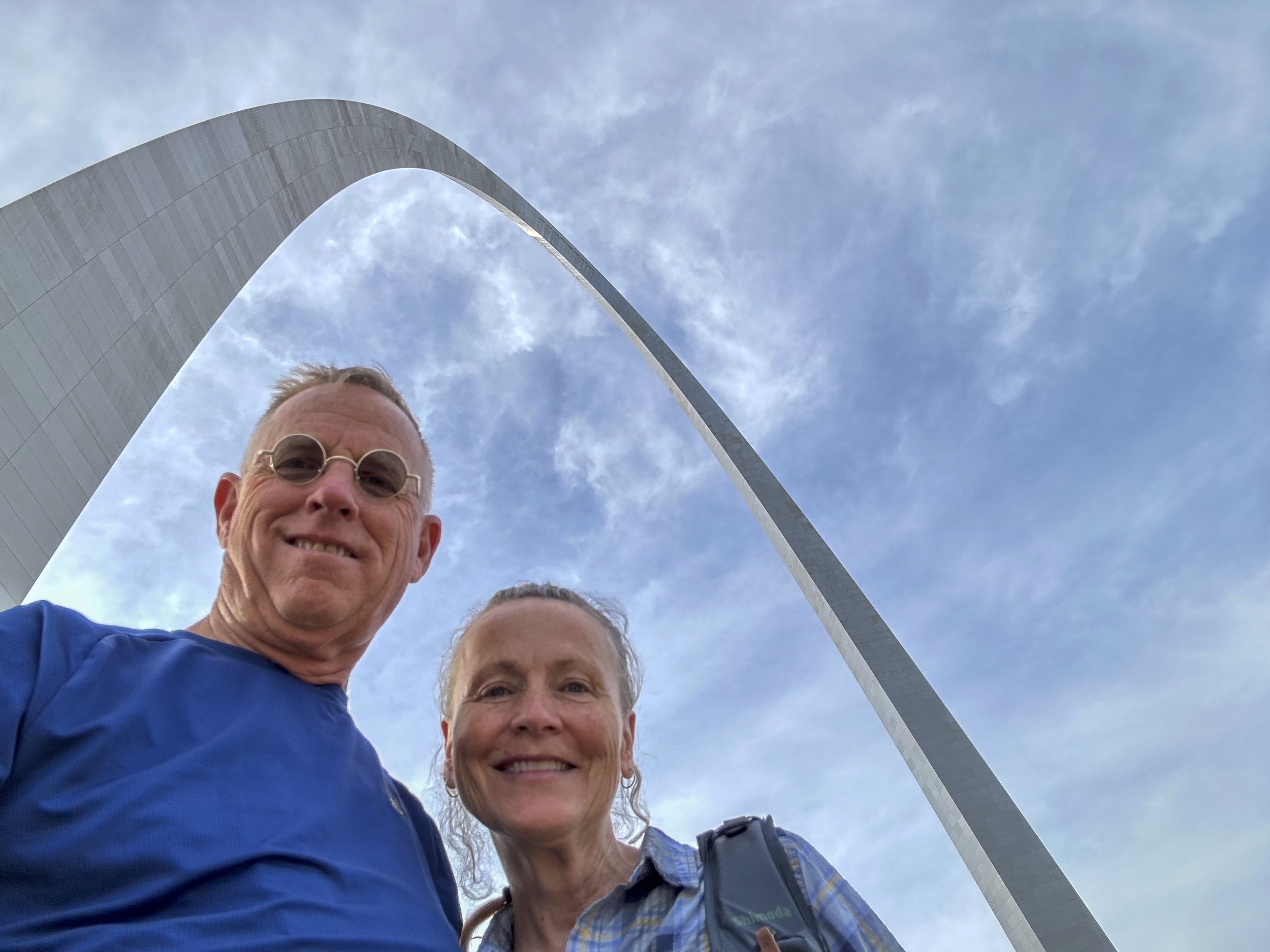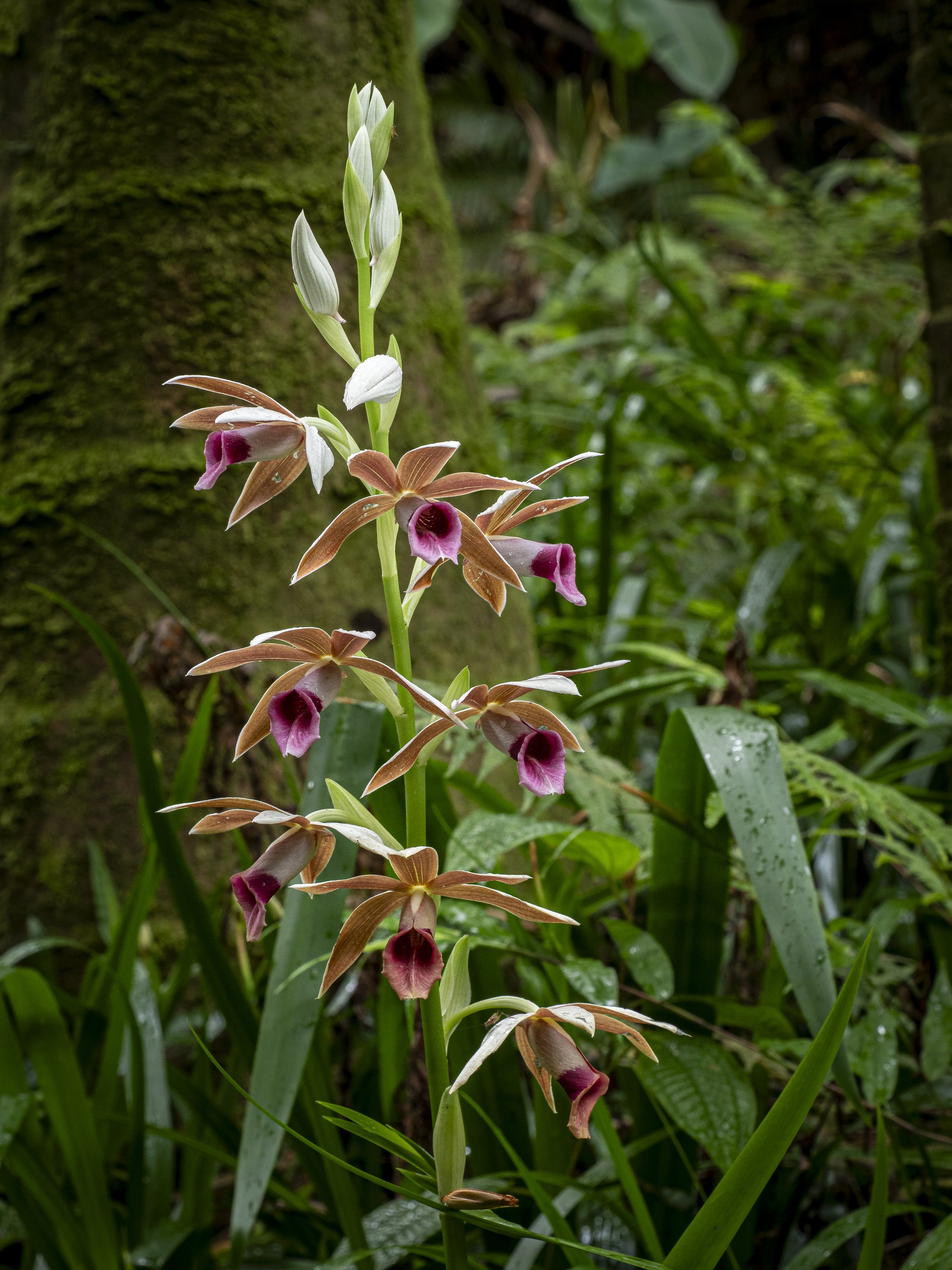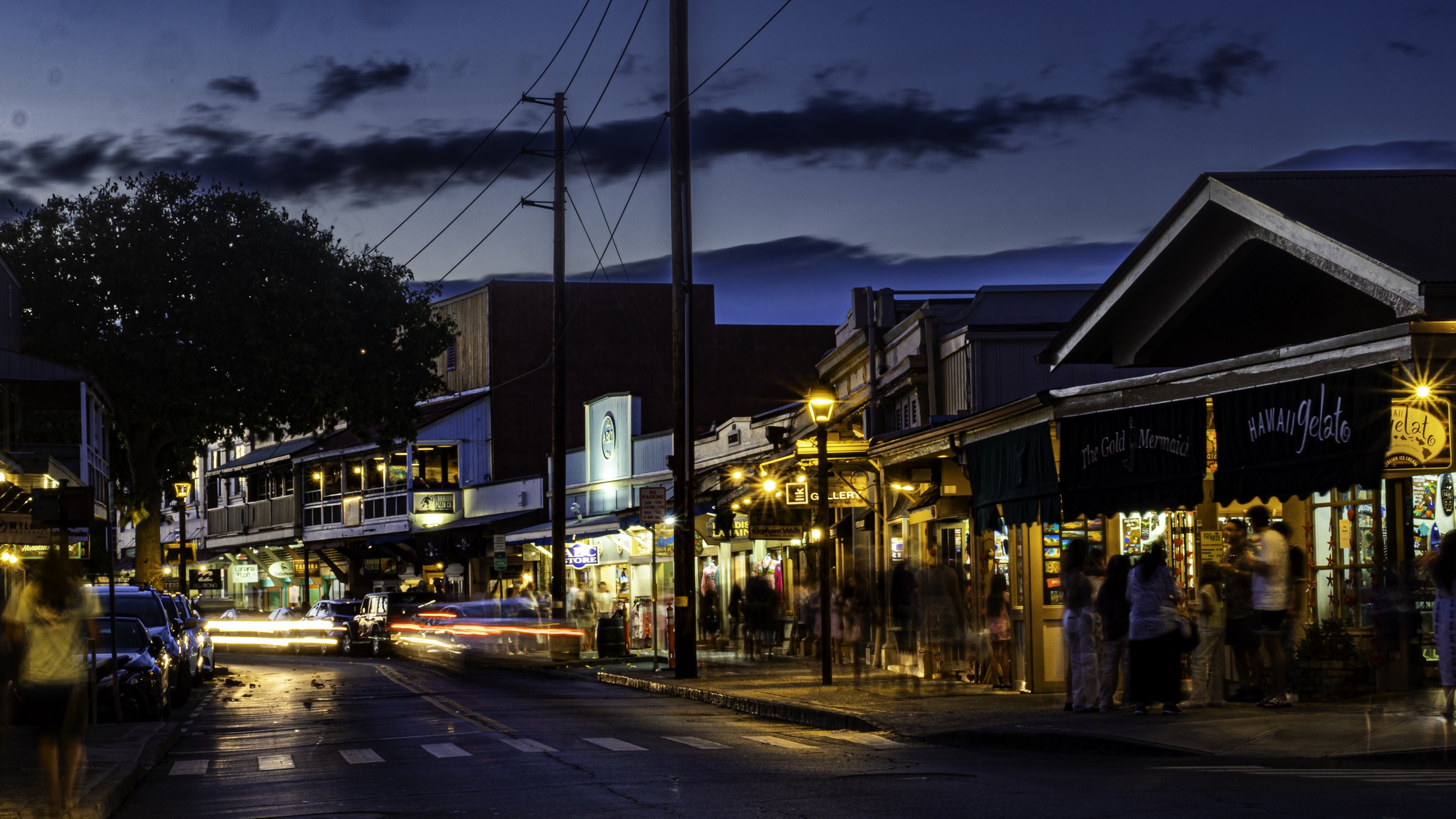On our current mission assignment, we work Monday through Friday from 8:00-4:00. With shorter daylight hours, I don’t have time to go out shooting when we’re done. The only time I get to be out with my camera is for an hour or two on Saturday mornings. Slowly, the last of the leaves have now fallen. Since my last post a month ago, I’ve been out a few times and found a bit of color.
I follow a few British photographers on YouTube. There are many old-growth forests across their island. I love seeing the images they compose in a chaotic forest setting. Forests are hard to shoot because one must control the many random elements in an attempt to compose order. I particularly enjoy seeing their old and gnarly oak trees that have such interesting structure and texture. Some of their specimens are 900+ years old. By contrast, I live in the desert Southwest, and I have no such forests to roam through and shoot photos of. The oaks in my neighborhood, on the foothill slopes of Mt. Timpanogos are scraggly in comparison. Our oaks are called scrub oaks, and it seems to be a fitting name next to the forest giants of old Great Britain. Mine are not forests stands I can wander through. The best I can do is find a grouping on the hillside and shoot into the thicket. There is no wandering within.
On the backside of the Wasatch Front from our area is the Heber Valley. The Provo River meanders along a wide flood plain on the edge of the valley. There is an area where the state is attempting to restore the river to its natural flow and vegetation. That area and project is called the Provo Restoration Trail. I like to visit there early in the morning, before the sun rises, and watch the first rays of light strike the peaks of Mt. Timpanogos. At this time of year when the air is cool, mist is often found rising from the water surface.
Provo River and Mt. Timpanogos
Provo River Restoration Project
I’m now shooting with the Olympus Systems OM1 Mii camera body and I am quite enjoying its functionality. There is a lot to learn still, but I’ve been attempting to use the computational modes that allow me to shoot timed exposures without using a tripod. The in-body image stabilization is amazing.
Upper Falls in Provo Canyon. This image is a timed exposure, but shot handheld, demonstrating the image stabilization and computational functionality of the OM1 Mii.

